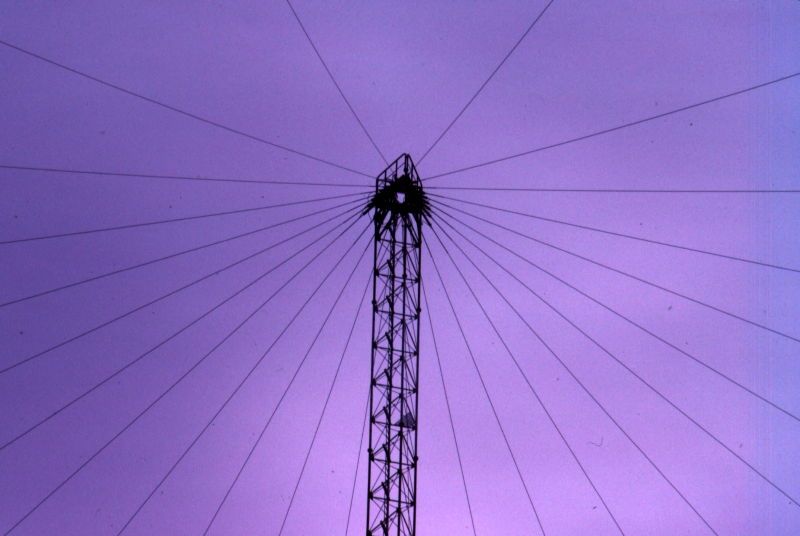Too much advanced technology for a safe navigation
Enhanced Loran (eLoran) Navigation
https://suite.io/alan-sorum/kz628n
Recently the Department of Homeland Security announced in a press release its intention to adopt an upgrade of the currently installed Loran-C radio navigation system in an effort to complement use of existing Global Positioning System (GPS) technology. The new enhanced or eLoran system will insure the livelihood of a historically functional and highly reliable radio navigation system.
Overview – Over the years, the low-frequency LOng RAnge Navigation (LORAN) system has provided a reliable navigation standard for aviators and mariners. Existing Loran technology provides positioning accuracy of 460 meters or 1,500 feet. With the advent of GPS satellite technology, many thought that this legacy system had become irrelevant.
Researchers have looked at an update to Loran that would take advantage of new technology and provide a system that could effectively backup use of GPS equipment if it should fail. Called eLoran, it would ensure safe navigation for vessels even if satellite signals are disrupted or cannot be received.
Advantages – eLoran utilizes high power transmitters broadcasting low frequency emissions that are difficult to jam and are resistant to interference. Small, inexpensive eLoran receivers can easily be built into global navigation equipment to ensure redundancy in position and time data. eLoran can act as a static compass, a feat GPS is incapable of duplicating.
Navigation information provided by eLoran will be accurate enough to support non-precision aircraft instrument approaches, coastal harbor approaches by vessels in low-visibility conditions, and land navigation. The system will provide exceedingly accurate time and frequency references needed by the telecommunications industry.
eLORAN Signal – The legacy Loran system currently in use is called Loran-C. eLoran improves upon it with the addition of a separate data channel that can convey signal integrity information, corrections or system warnings. eLoran transmissions will provide a source for accurate Coordinated Universal Time (UTC) that is critical for safe navigation independent of GPS satellites.
System receivers will operate in an “all-in-view” manner were they track all of the eLoran transmitter stations they can receive and use this information to improve position accuracy. This is similar to the way a GPS receiver utilizes all the satellites that it can see or receive signals from above the horizon. The Coast Guard and Federal Aviation Administration are currently testing on-air tests of the Loran Data Channel (LDC).
eLoran holds the promise of an reliable and user friendly adjunct to current GPS technology. There are several generations of mariners out there that never used any other navigation system until the advent of inexpensive GPS receivers.
To complete the information carried out to ELoran new chains I include the following review from the Newspaper “The Economist”
Satellite positioning-data are vital—but the signal is surprisingly easy to disrupt
on date 27 July 2013
EVERY day for up to ten minutes near the London Stock Exchange, someone blocks signals from the global positioning system (GPS) network of satellites. Navigation systems in cars stop working and timestamps on trades made in financial institutions can be affected. The incidents are not a cyber-attack by a foreign power, though. The most likely culprit, according to Charles Curry, whose firm Chronos Technology covertly monitors such events, is a delivery driver dodging his bosses’ attempts to track him.
The signals are weak. Mr Curry likens them to a 20-watt light bulb viewed from 12,000 miles (19,300 km). And the jammers are cheap: a driver can buy a dashboard model for about £50 ($78). They are a growing menace. The bubbles of electromagnetic noise they create interfere with legitimate GPS users. They can disrupt civil aviation and kill mobile-phone signals, too. In America their sale and use is banned. In Britain they are illegal for civilians to use deliberately, but not, yet, to buy: Ofcom, a regulator, is mulling a ban. In recent years Australian officials have destroyed hundreds of jammers.
In the right (or wrong) hands, they are potential weapons. Britain’s armed services test the devices in the Brecon Beacons in Wales, a military training area. North Korea uses big lorry-mounted versions to block GPS signals in South Korea. Starting with a four-day burst in August 2010, the attacks, which come from three positions inside the North, have lengthened. In early 2012 they ran for 16 days, causing 1,016 aircraft and 254 ships to report disruption.
Mr Curry worries that criminals or terrorists could knock out GPS for an entire city or shipping lane anywhere in a flash. Even without North Korean-sized contraptions, the jamming can be substantial. Suitcase-sized devices on sale on the internet claim a range of 300-1,000 meters.
Malfunctioning satellites and natural interference from solar activity have hit GPS signals and sent ships off course. David Last, a navigation expert, says an accidental power cut, perhaps caused by a jammer taken on board a car ferry, could cause a shipwreck. Generating a false signal—spoofing—is another threat. In December 2011 Iran said it had spoofed an American drone before capturing it (most experts dismiss the claim). So far effective spoofing seems confined to laboratories, but Mr Last says some governments are already taking countermeasures.
One solution is a different means of navigation. In April South Korea announced plans for a network of 43 eLoran (enhanced long-range navigation) ground-based radio towers, based on technology first used in the second world war. It uses a far stronger signal than GPS, and should give pilots and ships’ captains a safer alternative by 2016. With Chinese and Russian help, South Korea hopes to expand coverage across the region.
